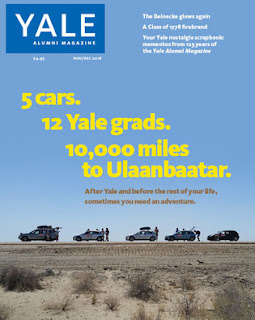The following post originally appeared in the Forestry Source. It was written by SilviaTerra's lead biometrician, Dr. Nan Pond.
A BAF 10 plot every 5 acres, or a 20th acre fixed radius plot every 2.5? A total height on every other plot, or every plot? What kind of inventory should you pay for, and how much does it matter to your bottom line?
Foresters across America have developed rules of thumb that guide how much inventory information they collect. Because inventories drive management decisions, these informal guidelines play an important but underappreciated role in forestry. But are those inventory habits actually optimal? Is there an opportunity to do better?
We all agree that having inventory information is important for making forest management decisions. Otherwise we wouldn't cruise at all! But we also know that collecting information has a cost - a cost that must be justified by improvements in management outcomes. This is why we measure sample plots rather than conducting a census of every tree - the value of the additional information does not pay back the cost of collecting it.
But there is a cost to having imperfect information. If we had a perfect information - a complete census - about our forest, we could feed that data to an optimal harvest scheduler and it would give us the best possible management plan. When we have imperfect information, our harvest scheduler will make some "mistakes" that cause us to harvest some areas too early and others too late. The more imperfect our information, the more mistakes we'll have in our management plan.
Like most things in life, finding the optimal level of inventory information to collect is all about tradeoffs. The key question is: "at what point does spending an additional dollar collecting inventory information no longer prevent more than a dollar of management mistakes?"
This turns out to be a challenging question to answer. While it's
straightforward to know how much we are spending on inventory for a given level of precision (the red and green lines), how do we quantify the cost of the "mistakes" in our suboptimal harvest schedule (the black line)? There are all sorts of variables that come into play, including forest type, age, product prices, growth predictions, etc. Until now, no one has been able to come up with a clear way to answer this important question across the US. In a 2008 paper called "The Value of Timber Inventory Information", Borders et al. discuss the tradeoffs of cost and imperfect information (“cost+loss”) in loblolly pine plantations and natural stands. This paper gives a great economic analysis, but that doesn’t help you decide how many plots, and what type or size of plots to install in your forest!

However, it turns out that we can use the excellent USFS FIA dataset and some clever coding to get to the bottom of this. The beauty of the FIA dataset is that it has spatially-explicit stem records (as shown in the diagram on the left). For any region in the US, we can use a collection of nearby FIA plots as a sort of "seed" for simulating a "virtual forest"
We now have perfect information for our virtual forest and can feed that information to a harvest scheduler to develop the optimal management plan. In this example, the harvest scheduler tells us we'll make $100K in profit.
Now here's the cool part - we can simulate cruising our virtual forest. For example, we could lay out 50 1/10 acre plots and see which trees are included in each. Then we use those plots to work up a cruise summary just like for a regular cruise.
We run the cruise summary through a harvest scheduler and it returns a management plan. But unlike our optimal management plan from before, this management plan is based off of imperfect information. That means we are almost certainly thinning some stands too early and others too late.
And we can find out! We apply the harvest schedule to our virtual forest and in this example, we end up with $90K in profit - $10K less than the perfect information optimum. Again, that means that we lost $10K because the information we bought was imperfect. We can do better, with better planning.
If we try again with 70 plots, we might find that we pay $500 more for those 20 extra plots, but end up with $92K in profit because we avoided a couple of management mistakes. The extra plots were worth it.
Using this method, we finally have a quantitative approach for making decisions about our inventory design. It's possible to simulate a range of sampling methodologies and see which is the most appropriate for our different forest types and management practices. This method is also easily extensible to include other aspects of our inventory or planning processes.
By directly relating our sampling methodology to our profitability, this approach lets us identify opportunities to improve our forest management while adding to the bottom line. There's much more to say about the results of this approach in different forest types - and recommendations we’ll make - stay tuned for more biometrics analysis in next month's issue!
Works Cited
B. E. Borders, W. M. Harrison, M.L. Clutter, B. D. Shiver and R.A. Souter. 2008. The Value of Timber Inventory Information. Can. J. For. Res. 38: 2287-2294.
















